Optimization of the Energy-Saving Building Envelopes in Regional Climate
Abstract
:1. Introduction
2. The Current Status of the Building Envelopes Typical of the Regional Climate
3. Initial Combination Forms of Energy-Saving Envelope
4. Regional Environment Characteristics
5. Single Residential Buildings and Energy Consumption Pattern of the Indoor Personnel
5.1. Single Residential Buildings
5.2. Energy Consumption Pattern of the Indoor Personnel
6. Calculation Method
6.1. TOPSIS Basic Principles
6.2. TOPSIS Calculation Steps
- 1.
- Create a decision or evaluation matrix D
- 2.
- Construct the normalized decision matrix R
- 3.
- Construct the weighted normalized decision matrix V
- 4.
- Determine the positive ideal and negative-ideal solutions Z+ (PIS) and Z− (NIS)
- 5.
- Distance measurement
6.3. RANCOM Basic Principles
6.4. RANCOM Calculation Steps
- 1.
- Define the criteria ranking
- 2.
- Establish the Matrix of Ranking Comparison
- 3.
- Calculate the Summed Criteria Weights
- 4.
- Calculate the final criteria weights
7. Results and Analysis
7.1. TOPSIS Results
- 1.
- Walls
- 2.
- Roof
- 3.
- Windows
- 4.
- Shading
7.2. RANCOM Results
7.3. Optimal Energy Saving Form Energy Consumption for Single Building
8. Conclusions
Author Contributions
Funding
Data Availability Statement
Conflicts of Interest
References
- Ye, M. Problems and countermeasures of rural housing industry development in China. Inf. China Constr. 2003, 3, 31–33. [Google Scholar]
- Liu, X. Discussion on Energy Conservation of Building Envelope. Available online: https://www.doc88.com/p-907857128506.html (accessed on 16 August 2023).
- Xiao, J.; Zhou, J.; Xu, F. Thermal environment evaluation index of residential buildings in hot summer and cold winter areas based on thermal environment. J. Cent. South Univ. (Sci. Technol.) 2012, 43, 36–39. [Google Scholar]
- Diao, R.; Sun, L.; Yang, F. Thermal performance of building wall materials in villages and towns in hot summer and cold winter zone in China. Appl. Therm. Eng. 2018, 128, 517–530. [Google Scholar] [CrossRef]
- Stazi, F.; Vegliò, A.; Di, P. Experimental comparison between 3 different traditional wall constructions and dynamic simulations to identify optimal thermal insulation strategies. Energy Build. 2013, 60, 429–441. [Google Scholar] [CrossRef]
- Cabeza, L.; Castell, A.; Medrano, M. Experimental study on the performance of insulation materials in Mediterranean construction. Energy Build. 2010, 42, 630–636. [Google Scholar] [CrossRef]
- Pan, D.; Chan, M.; Deng, S. The effects of external wall insulation thickness on annual cooling and heating energy uses under different climates. Appl. Energy 2012, 97, 313–318. [Google Scholar] [CrossRef]
- Fang, Z.; Li, N.; Li, B. The effect of building envelope insulation on cooling energy consumption in summer. Energy Build. 2014, 77, 197–205. [Google Scholar] [CrossRef]
- Daouas, N.; Hassen, Z.; Aissia, H. Analytical periodic solution for the study of thermal performance and optimum insulation thickness of building walls in Tunisia. Appl. Therm. Eng. 2010, 30, 319–326. [Google Scholar] [CrossRef]
- Guo, S.; Yan, D.; Cui, Y. Analysis on the influence of occupant behavior pattems to building envelope’s performance space heating in residential buildings in Shanghai. In Proceedings of the 2nd Asia Conference of International Building Performance Simulation Association, Nagoya, Japan, 28–29 November 2014; pp. 610–616. [Google Scholar]
- Jian, L.; Wen, Z.; Zhi, L. Analysis of air-conditioning cooling and heating source scheme for a commercial complex in hot summer and cold winter area. Build. Energy Effic. 2018, 46, 124–127. [Google Scholar]
- Kaynakli, O. A review of the economical and optimum thermal insulation thickness for building applications. Renew. Sustain. Energy Rev. 2012, 16, 415–426. [Google Scholar] [CrossRef]
- Tu, J.; Li, R.; Qin, F. Study on Residential Building Energy-Saving Comprehensive Evaluation System in Hot Summer and Cold Winter Zone Based on AHP. Applied Mechanics and Materials. Trans. Tech. Publ. 2012, 178, 102–108. [Google Scholar]
- Guo, W.; Qiao, X.; Huang, Y. Study on energy saving effect of heat-reflective insulation coating on envelopes in the hot summer and cold winter zone. Energy Build. 2012, 50, 196–203. [Google Scholar] [CrossRef]
- Xu, L.; Liu, J.; Pei, J. Building energy saving potential in Hot Summer and Cold Winter (HSCW) Zone, China-Influence of building energy efficiency standards and implications. Energy Policy 2013, 57, 253–262. [Google Scholar] [CrossRef]
- Yu, J.; Tian, L.; Yang, C. Sensitivity analysis of energy performance for high-rise residential envelope in hot summer and cold winter zone of China. Energy Build. 2013, 64, 264–274. [Google Scholar] [CrossRef]
- Tummu, P.; Chirarattananon, S.; Hien, V. Thermal performance of insulated walls enclosing residential spaces in Thailand. Energy Build. 2013, 61, 323–332. [Google Scholar] [CrossRef]
- Chirarattananon, S.; Hien, V.; Tummu, P. Thermal performance and cost effectiveness of wall insulation under Thai climate. Energy Build. 2012, 45, 82–90. [Google Scholar] [CrossRef]
- Udaykumar, A.; Rajasekar, E.; Venkateswaran, R. Thermal comfort characteristics in naturally ventilated, residential apartments in a hot-dry climate of India. Indoor Built Environ. 2015, 24, 101–115. [Google Scholar] [CrossRef]
- Crawley, D.B.; Lawrie, L.K.; Winkelmann, F.C.; Buhl, W.F.; Huang, Y.J.; Pedersen, C.O.; Strand, R.K.; Liesen, R.J.; Fisher, D.E.; Witte, M.J.; et al. EnergyPlus: Creating a new-generation building energy simulation program. Energy Build. 2001, 33, 319–331. [Google Scholar] [CrossRef]
- Fumo, N.; Mago, P.; Luck, R. Methodology to estimate building energy consumption using EnergyPlus Benchmark Models. Energy Build. 2010, 42, 2331–2337. [Google Scholar] [CrossRef]
- Garcia, D. SIMUS: An open-source simulator for medical ultrasound imaging. Part I: Theory & examples. Comput. Methods Programs Biomed. 2022, 218, 106726. [Google Scholar]
- Kizielewicz, B.; Więckowski, J.; Shekhovtsov, A.; Wątróbski, J.; Depczyński, R.; Sałabun, W. Study towards the time-based mcda ranking analysis—A supplier selection case study. Facta Univ. Ser. Mech. Eng. 2021, 19, 381–399. [Google Scholar] [CrossRef]
- Więckowski, J.; Kizielewicz, B.; Shekhovtsov, A.; Sałabun, W. RANCOM: A novel approach to identifying criteria relevance based on inaccuracy expert judgments. Eng. Appl. Artif. Intell. 2023, 122, 106114. [Google Scholar] [CrossRef]
- Maniya, K.; Bhatt, M. A selection of material using a novel type decision-making method: Preference selection index method. Mater. Des. 2010, 31, 1785–1789. [Google Scholar] [CrossRef]
- Rathod, M.; Kanzaria, H. A methodological concept for phase change material selection based on multiple criteria decision analysis with and without fuzzy environment. Mater. Des. 2011, 32, 3578–3585. [Google Scholar] [CrossRef]
- Kizielewicz, B.; Bączkiewicz, A. Comparison of Fuzzy TOPSIS, Fuzzy VIKOR, Fuzzy WASPAS and Fuzzy MMOORA methods in the housing selection problem. Procedia Comput. Sci. 2021, 192, 4578–4591. [Google Scholar] [CrossRef]
- Jin, L. Design Research on Improving Indoor Thermal Environment of Rural Residential Buildings in Chongqing. Master’s Thesis, Chongqing University, Chongqing, China, 2015. [Google Scholar]
- Cao, B.; Zhu, Y. Comparison of indoor thermal environment and human thermal adaptability of residential buildings in different climate zones in winter. J. Tsinghua Univ. (Sci. Technol.) 2012, 52, 499–503. [Google Scholar]
- Li, L. The energy-saving design of building is analyzed from the perspective of building. Build. Mater. Decor. 2008, 4, 274–275. [Google Scholar]
- Zhou, Y. Study on the Morphological Characteristics of Traditional Dwellings in Southeast Zhejiang; Tongji University Press: Shanghai, China, 2012; pp. 243–251. [Google Scholar]
- Zhou, Y. Existing problems and countermeasures of newly-built residential buildings in rural areas of Wenzhou. Resid. Sci. Technol. 2012, 32, 2–36. [Google Scholar]
- Ying, D. Extraction and Optimization of Energy Saving Technology for Traditional Residential Houses in Mountainous Areas of Southern Zhejiang Province. Master’s Thesis, Zhejiang University, Hangzhou, China, 2013. [Google Scholar]
- Wang, Y. Study on Energy Saving and Heat Preservation of Building Exterior Wall in Hot Summer and Cold Winter Area. Master’s Thesis, Nanchang University, Nanchang, China, 2014. [Google Scholar]
- Wnag, Q. Energy saving measures of building envelope. Energy Environ. 2014, 30, 30–31. [Google Scholar]
- Fang, R. Theoretical Study on Thermal Insulation and Energy Saving of Residential Building Envelope under the Mode of Sub-chamber Intermittent Energy Use. Ph.D. Thesis, Zhejiang University, Hangzhou, China, 2017. [Google Scholar]
- JGJ 134–2010; Design Standard for Energy Efficiency of Residential Buildings in Hot Summer and Cold Winter Zone. Ministry of Housing and Urban-Rural Development: Beijing, China, 2010.
- Xiufang, J.; Rongdan, D.; Li, Z.; Ying, Z.; Xinrong, L. Comparative Study on Performance of Renewable Energy Building Energy Supply System. E3S Web Conf. EDP Sci. 2021, 233, 01077. [Google Scholar] [CrossRef]
- Belenson, S.; Kapur, K. An algorithm for solving multicriterion linear programming problems with examples. J. Oper. Res. Soc. 1973, 24, 65–77. [Google Scholar] [CrossRef]
- Hwang, C.; Yoon, K. Multiple Attribute Decision Making: A State of the Art Survey. Lecture Notes in Economics and Mathematical Systems; Springer: Berlin, Germany, 1981; Volume 186. [Google Scholar]
- Liu, Y. Heat Transfer Theory; China Electric Power Press: Beijing, China, 2020. [Google Scholar]
- Zhang, J. Manual of Thermophysical Properties of Common Engineering Materials; New Times Press: Beijing, China, 1987. [Google Scholar]
- Jianhua, B. Experimental Study on Gas Production Performance of Constant Temperature Biogas Digester Heated by Solar Energy. Master’s Thesis, Lanzhou University of Technology, Lanzhou, China, 2011. [Google Scholar]


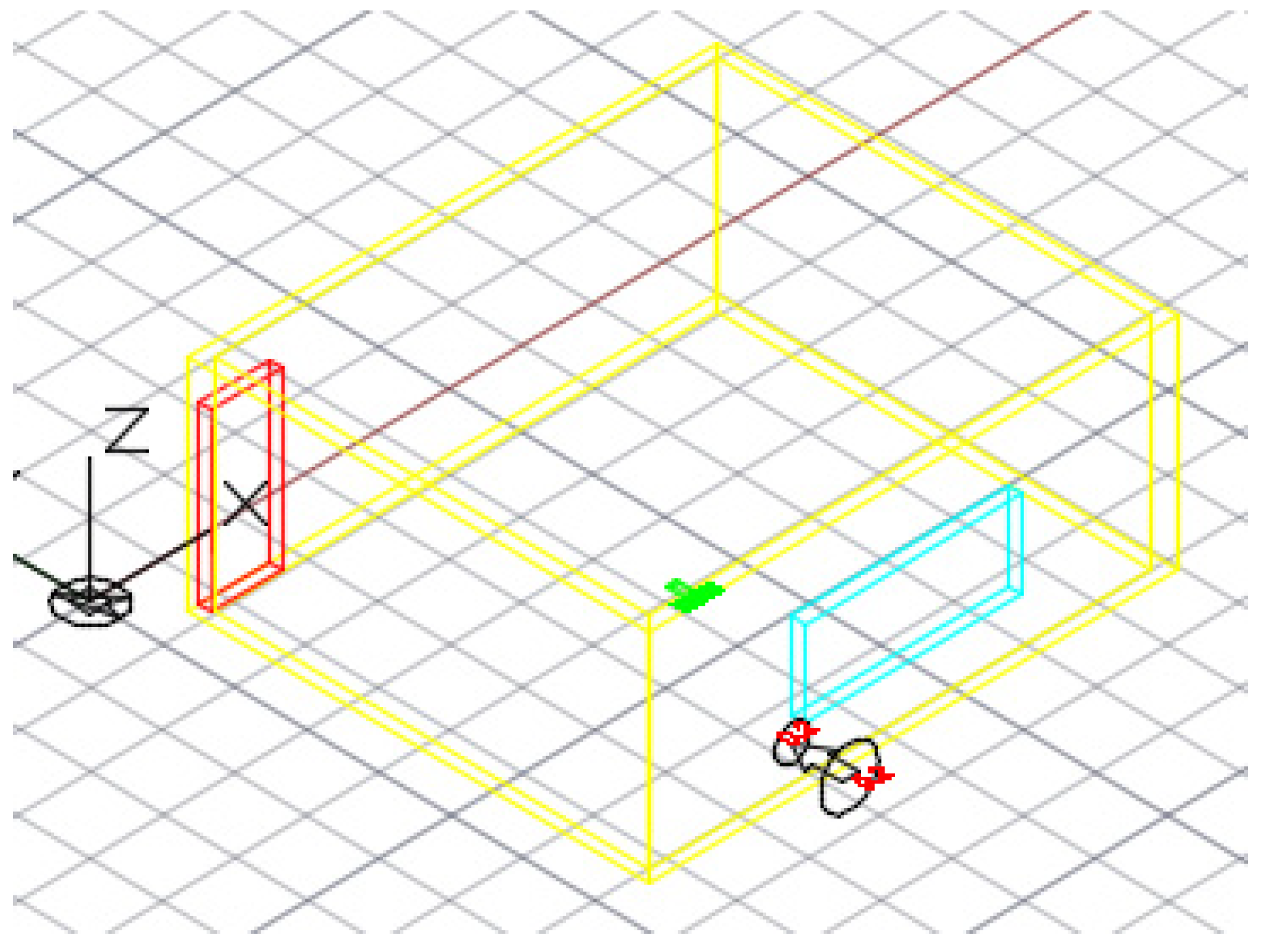
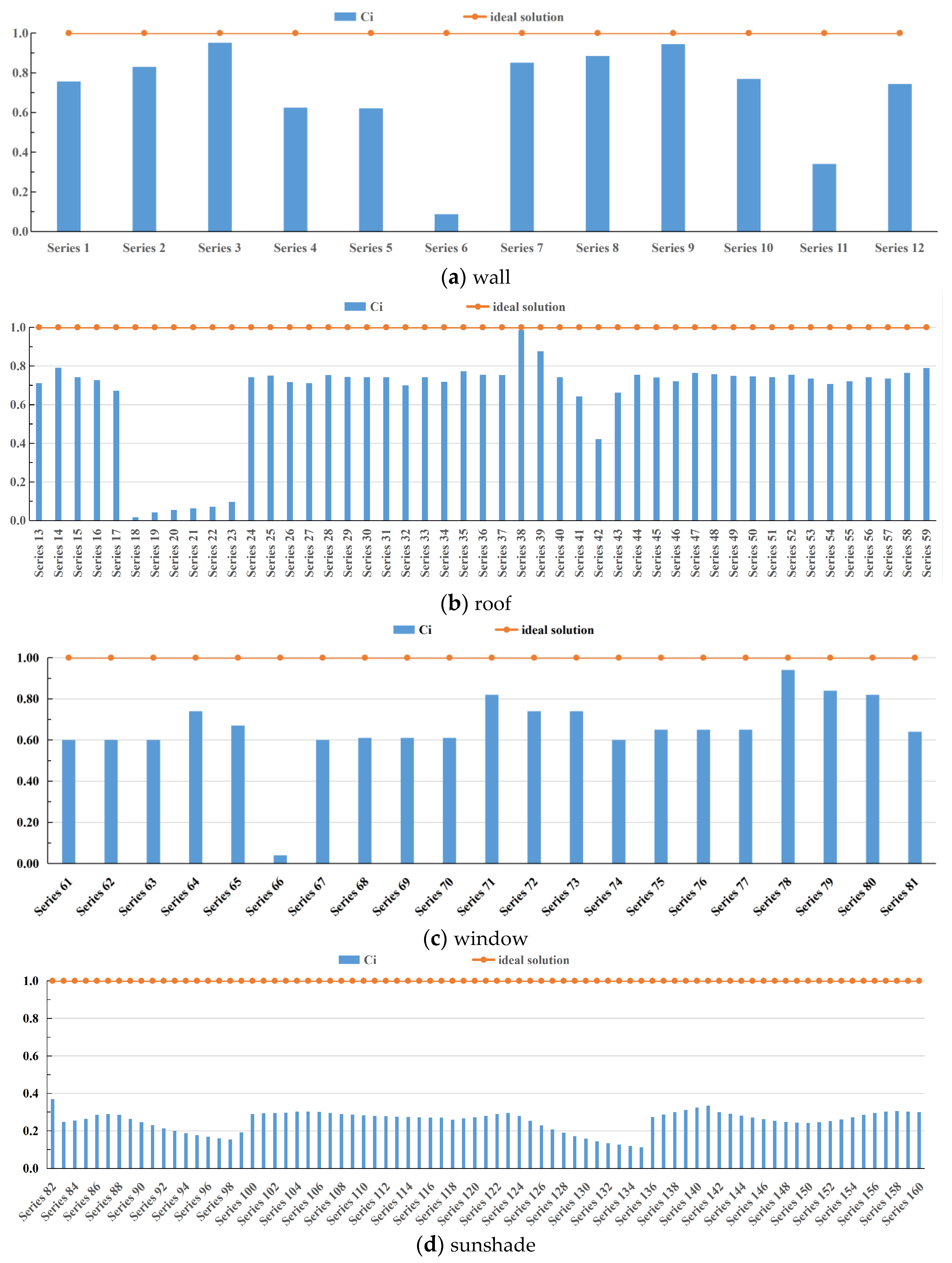
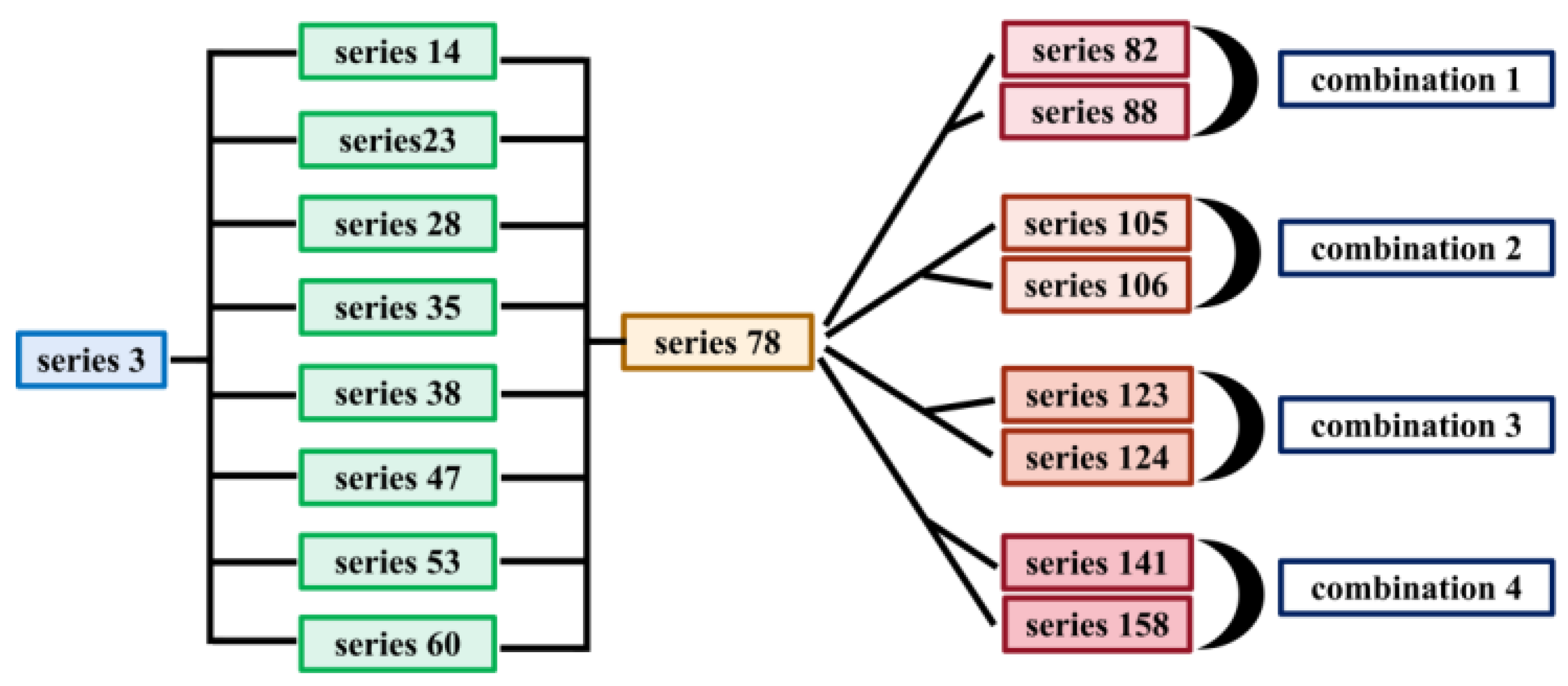
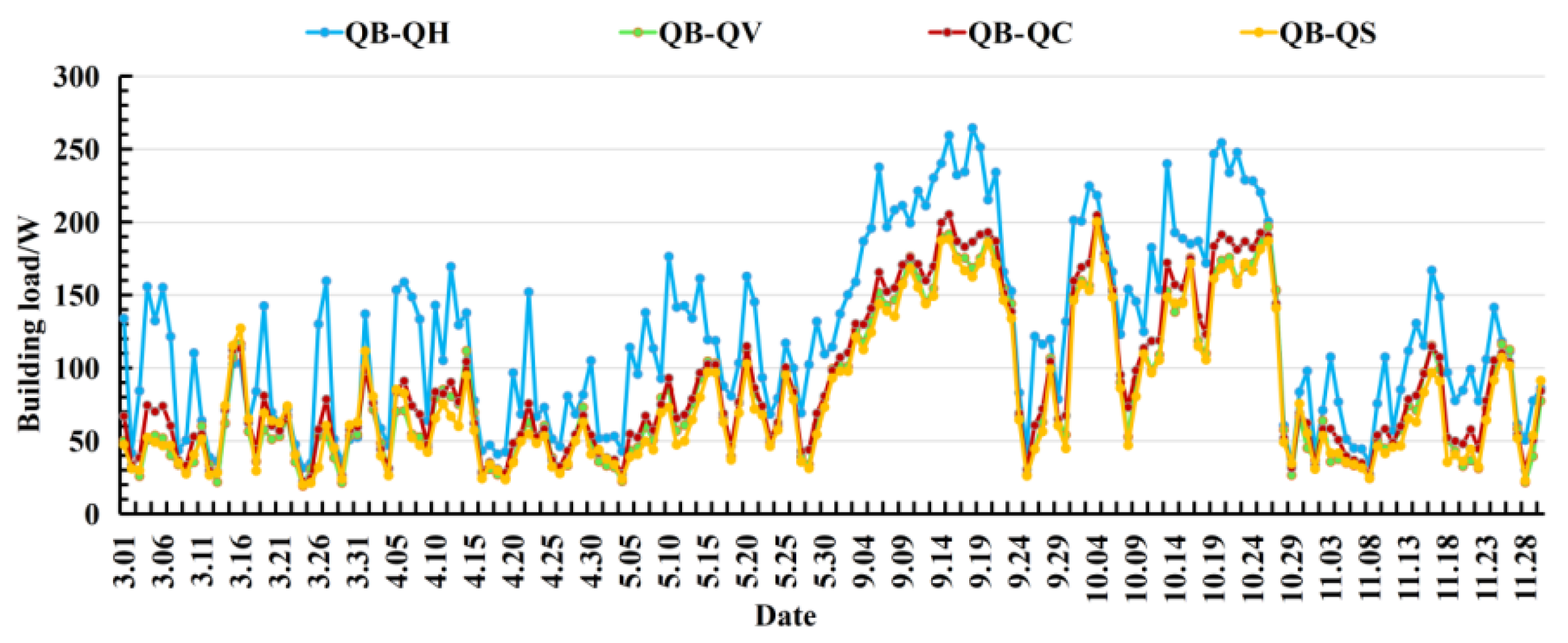
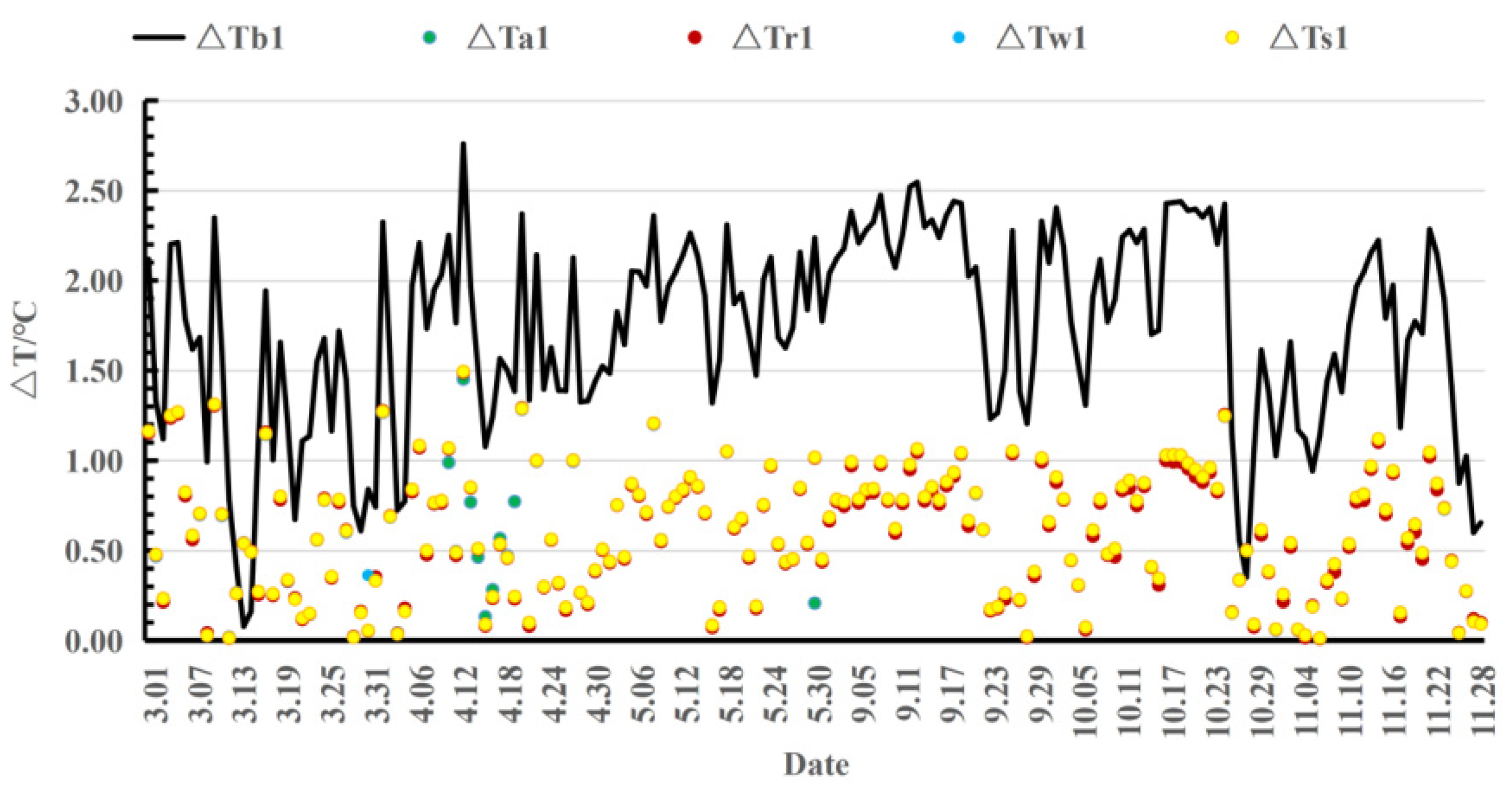
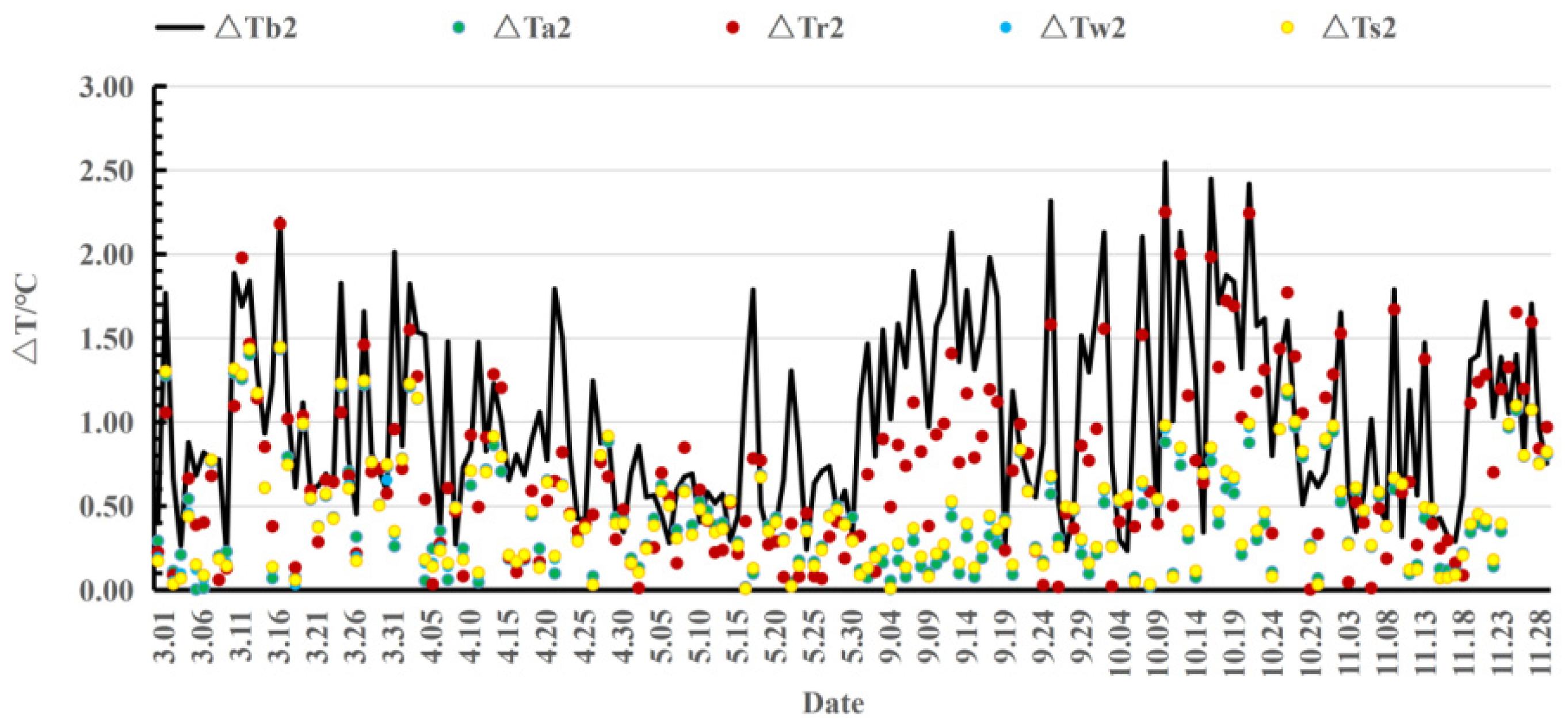
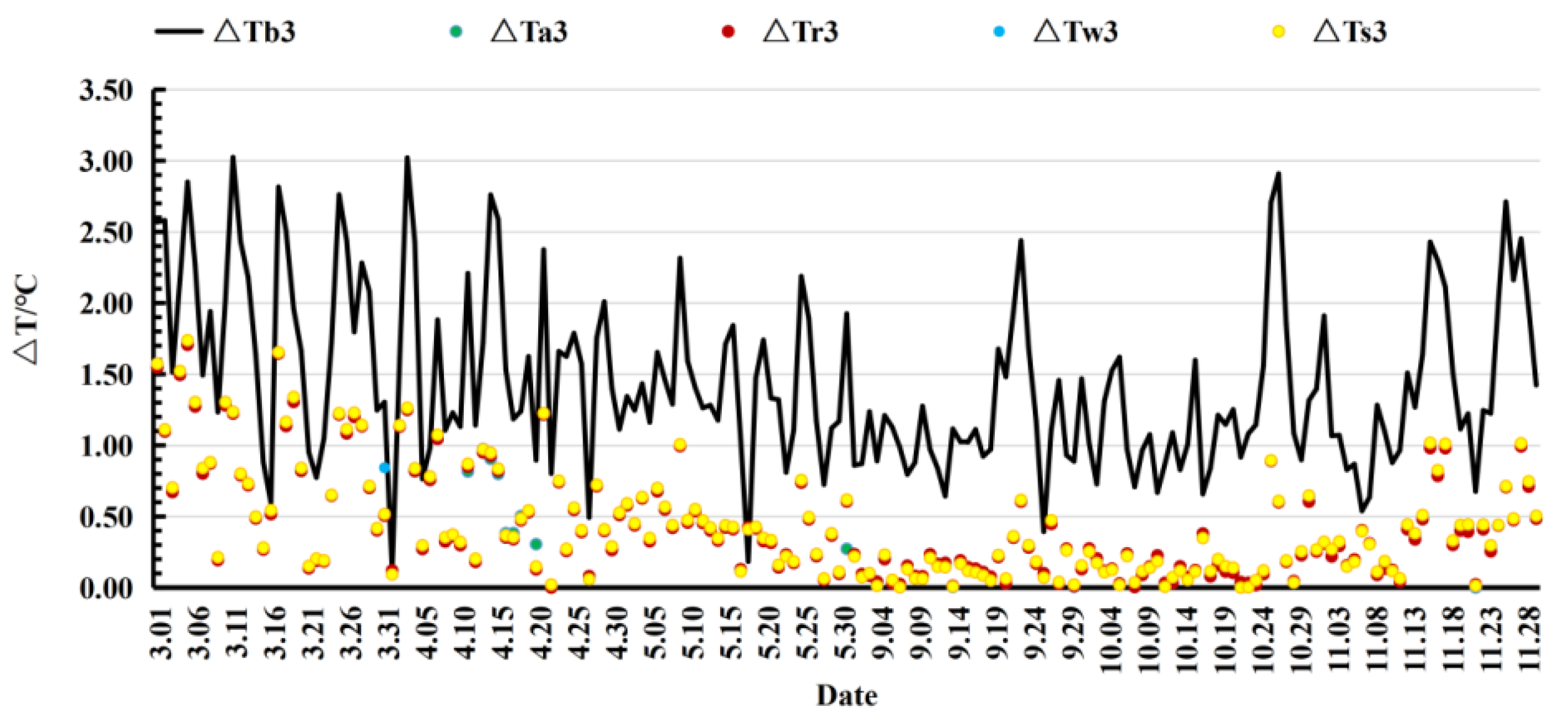


| Forms of Combination | The Wall Materials | The Roof Materials | The Window Materials | The Shading Methods |
|---|---|---|---|---|
| Series 1 | Ceramsite concrete composite block | Basic Roof | Basic Window | No Shading |
| Series 2 | Sintered porous brick | |||
| Series 3 | Sintered hollow brick | |||
| Series 4 | Autoclaved sand aerated concrete block | |||
| Series 5 | Autoclaved fly ash aerated concrete block | |||
| Series 6 | Foam concrete block | |||
| Series 7 | Non-clay sintered insulation brick | |||
| Series 8 | Lightweight aggregate concrete hollow | |||
| Series 9 | Ordinary concrete porous brick | |||
| Series 10 | Ordinary concrete porous block | |||
| Series 11 | Sintered ordinary brick masonry | |||
| Series 12 | Non-clay sintered insulation block |
| Forms of Combination | The Roof Materials | The Wall Materials | The Window Materials | The Shading Methods | |
|---|---|---|---|---|---|
| Series 13 | Plant height | 0.10 | Basic Wall | Basic Window | No Shading |
| Series 14 | 0.20 | ||||
| Series 15 | 0.30 | ||||
| Series 16 | 0.40 | ||||
| Series 17 | 0.50 | ||||
| Series 18 | Leaf area index | 0.10 | |||
| Series 19 | 0.20 | ||||
| Series 20 | 0.30 | ||||
| Series 21 | 0.40 | ||||
| Series 22 | 0.50 | ||||
| Series 23 | 1.00 | ||||
| Series 24 | Leaf reflectivity | 0.10 | |||
| Series 25 | 0.20 | ||||
| Series 26 | 0.30 | ||||
| Series 27 | 0.40 | ||||
| Series 28 | 0.80 | ||||
| Series 29 | 0.85 | ||||
| Series 30 | 0.90 | ||||
| Series 31 | 0.95 | ||||
| Series 32 | Leaf roughness | very rough | |||
| Series 33 | medium rough | ||||
| Series 34 | rough | ||||
| Series 35 | smooth | ||||
| Series 36 | medium smooth | ||||
| Series 37 | very smooth | ||||
| Series 38 | Soil thickness | 0.05 | |||
| Series 39 | 0.10 | ||||
| Series 40 | 0.20 | ||||
| Series 41 | 0.30 | ||||
| Series 42 | 0.40 | ||||
| Series 43 | 0.50 | ||||
| Series 44 | Soil conductivity | 0.40 | |||
| Series 45 | 0.50 | ||||
| Series 46 | 0.60 | ||||
| Series 47 | 0.70 | ||||
| Series 48 | 0.80 | ||||
| Series 49 | 0.90 | ||||
| Series 50 | 1.00 | ||||
| Series 51 | Soil specific heat | 500 | |||
| Series 52 | 1000 | ||||
| Series 53 | 1500 | ||||
| Series 54 | 2000 | ||||
| Series 55 | Soil density | 300 | |||
| Series 56 | 400 | ||||
| Series 57 | 500 | ||||
| Series 58 | 1000 | ||||
| Series 59 | 1500 | ||||
| Series 60 | 2000 | ||||
| Forms of Combination | The Window Materials | The Wall Materials | The Roof Materials | The Shading Methods |
|---|---|---|---|---|
| Series 61 | u = 6.5 plastic–steel window + standard external window | Basic Wall | Basic Roof | No Shading |
| Series 62 | u = 6.5 plastic–steel window + blue heat-absorbing single glass | |||
| Series 63 | u = 6.5 plastic–steel window + high-transmittance heat-reflecting glass | |||
| Series 64 | u =4 plastic–steel window + ordinary hollow | |||
| Series 65 | u = 4.6 plastic–steel window + low–e medium transmittance | |||
| Series 66 | u = 4.7 paternal steel window + low–e high transmittance | |||
| Series 67 | u = 6.6 model steel window + ordinary 3-mm single glass | |||
| Series 68 | u = 5.7 insulated heat aluminum alloy + standard external window | |||
| Series 69 | u = 5.7 insulated aluminum alloy + blue heat-absorbing glass single glass | |||
| Series 70 | u = 5.7 insulated aluminum alloy + high-transmittance heat-reflecting glass | |||
| Series 71 | u = 3.4 insulated aluminum alloy + ordinary hollow | |||
| Series 72 | u = 4 insulated aluminum alloy + low–e medium permeability | |||
| Series 73 | u = 4 insulated aluminum alloy + low–e high permeability | |||
| Series 74 | u = 5.8 insulated aluminum alloy + ordinary 3 mm single glass | |||
| Series 75 | u = 4.9 PVC plastic–steel type + standard external window | |||
| Series 76 | u = 4.9 PVC plastic–steel type + blue heat-absorbing glass single glass | |||
| Series 77 | u = 4.9 PVC plastic–steel type + high-transmitting heat-reflecting glass | |||
| Series 78 | u = 2.8 PVC plastic–steel type + ordinary hollow | |||
| Series 79 | u = 3.3 PVC plastic–steel type + low–e medium permeability | |||
| Series 80 | u = 3.4 PVC plastic–steel type + low–e high permeability | |||
| Series 81 | u = 5 PVC plastic–steel type + ordinary 3–mm single glass |
| Forms of Combination | The Shading Methods | The Wall Materials | The Roof Materials | The Window Materials | ||
|---|---|---|---|---|---|---|
| Series 82 | Horizontal shading | Transmittance | 0.20 | Basic Wall | Basic Roof | Basic Window |
| Series 83 | 0.30 | |||||
| Series 84 | 0.40 | |||||
| Series 85 | 0.50 | |||||
| Series 86 | 0.70 | |||||
| Series 87 | 0.80 | |||||
| Series 88 | Extension length of the sun visor | 100 | ||||
| Series 89 | 200 | |||||
| Series 90 | 300 | |||||
| Series 91 | 400 | |||||
| Series 92 | 500 | |||||
| Series 93 | 600 | |||||
| Series 94 | 700 | |||||
| Series 95 | 800 | |||||
| Series 96 | 900 | |||||
| Series 97 | 1000 | |||||
| Series 98 | 1100 | |||||
| Series 99 | 1200 | |||||
| Series 100 | Vertical shading | Transmittance | 0.15 | |||
| Series 101 | 0.30 | |||||
| Series 102 | 0.40 | |||||
| Series 103 | 0.50 | |||||
| Series 104 | 0.70 | |||||
| Series 105 | 0.80 | |||||
| Series 106 | Extension length of the sun visor | 100 | ||||
| Series 107 | 200 | |||||
| Series 108 | 300 | |||||
| Series 109 | 400 | |||||
| Series 110 | 500 | |||||
| Series 111 | 600 | |||||
| Series 112 | 700 | |||||
| Series 113 | 800 | |||||
| Series 114 | 900 | |||||
| Series 115 | 1000 | |||||
| Series 116 | 1100 | |||||
| Series 117 | 1200 | |||||
| Series 118 | Comprehensive shading | Transmittance | 0.15 | |||
| Series 119 | 0.30 | |||||
| Series 120 | 0.40 | |||||
| Series 121 | 0.50 | |||||
| Series 122 | 0.70 | |||||
| Series 123 | 0.80 | |||||
| Series 124 | Extension length of the sun visor | 100 | ||||
| Series 125 | 200 | |||||
| Series 126 | 300 | |||||
| Series 127 | 400 | |||||
| Series 128 | 500 | |||||
| Series 129 | 600 | |||||
| Series 130 | 700 | |||||
| Series 131 | 800 | |||||
| Series 132 | 900 | |||||
| Series 133 | 1000 | |||||
| Series 134 | 1100 | |||||
| Series 135 | 1200 | |||||
| Series 136 | Louver-based shading | Transmittance | 0.15 | |||
| Series 137 | 0.30 | |||||
| Series 138 | 0.40 | |||||
| Series 139 | 0.50 | |||||
| Series 140 | 0.70 | |||||
| Series 141 | 0.80 | |||||
| Series 142 | Louver angle | 0° | ||||
| Series 143 | 10° | |||||
| Series 144 | 20° | |||||
| Series 145 | 30° | |||||
| Series 146 | 40° | |||||
| Series 147 | 50° | |||||
| Series 148 | 60° | |||||
| Series 149 | 70° | |||||
| Series 150 | 80° | |||||
| Series 151 | 90° | |||||
| Series 152 | 100° | |||||
| Series 153 | 110° | |||||
| Series 154 | 120° | |||||
| Series 155 | 130° | |||||
| Series 156 | 140° | |||||
| Series 157 | 150° | |||||
| Series 158 | 160° | |||||
| Series 159 | 170° | |||||
| Series 160 | 180° | |||||
| Outdoor Air Temperature (°C) | Outdoor Air Relative Humidity (%) | Environment Wind Speed (m/s) | Solar Radiation Rate (W/m2) | |
|---|---|---|---|---|
| March | 11.93 | 79.00 | 1.39 | 140.98 |
| April | 16.93 | 79.48 | 1.55 | 154.38 |
| May | 20.97 | 84.23 | 1.50 | 176.77 |
| September | 25.51 | 79.13 | 2.10 | 170.31 |
| October | 20.86 | 76.01 | 1.65 | 155.59 |
| November | 15.90 | 71.06 | 1.39 | 127.68 |
| Structure | Practice |
|---|---|
| Roof (inverted) | From top to bottom: 70 mm thick cement cinder slope layer, 20 mm thick cement mortar leveling layer, 10 mm thick modified asphalt flexible linoleum waterproof layer, 130 mm thick extruded polystyrene board, 20 mm thick cement mortar protective layer, 100 mm thick reinforced concrete, and 20 mm thick cement mortar plastering. |
| Walls | From the outside to the inside: 20 mm thick cement mortar plastering, 200 mm thick reinforced concrete plastering, and 20 mm thick cement mortar plastering. |
| Floors | From top to bottom: 12 mm thick marble floor tile, 100 mm thick reinforced concrete. |
| All-wood door | A 25 mm thick pine and spruce wooden door. |
| Envelopes | Thermal Conduction Resistance ((m·K)/W) | Heat Transfer Coefficient (W/(m2·K)) | Thermal Inertness Index |
|---|---|---|---|
| Wall | 0.16 | 3.16 | 2.64 |
| Floor | 0.06 | 4.55 | 2.86 |
| Roof (inverted) | 4.39 | 0.22 | 2.84 |
| All-wood door | 0.18 | 2.95 | — |
| Pattern | Time Quantum | |||
|---|---|---|---|---|
| Natural ventilation | Workday | Open the door | May, September | 06:00–08:00, 17:00–19:00 |
| Open the window | March, April, May, September, October, November | 06:00–08:00, 17:00–19:00 | ||
| Day off | Open the door | May, September | 08:00–19:00 | |
| Open the window | March, April, May, September, October, November | 08:00–19:00 | ||
| Illumination | Turn on the light | 06:00–08:00, 17:00–24:00 | ||
| C1 | C2 | C3 | C4 | |
|---|---|---|---|---|
| The wall materials | Sintered hollow brick | Ordinary concrete porous brick | Lightweight aggregate concrete hollow | Non-clay sintered insulation brick |
| The roof materials | Soil thickness 0.05 | Soil density 1500 | Plant height 0.20 | Leaf roughness smooth |
| The window materials | u = 2.8 PVC plastic–steel type + ordinary hollow | u = 3.3 PVC plastic–steel type + Low–e medium permeability | u = 3.4 PVC plastic–steel type + Low–e high permeability | u = 3.4 insulated aluminum alloy + ordinary hollow |
| The shading materials | Horizontal shading transmittance 0.20 | Vertical shading transmittance 0.80 | Comprehensive shading–extension length of the sun visor–200 | Louver–based shading transmittance 0.80 |
| QAV(QB–QH) (W) | QAV(QB–QV) (W) | QAV(QB–QC) (W) | QAV(QB–QS) (W) | |
|---|---|---|---|---|
| March | 81.36 | 47.90 | 56.04 | 50.34 |
| April | 93.47 | 56.61 | 60.48 | 52.94 |
| May | 106.88 | 65.65 | 69.61 | 60.23 |
| September | 182.99 | 132.76 | 140.98 | 127.69 |
| October | 178.63 | 132.76 | 142.77 | 130.82 |
| November | 88.67 | 58.17 | 63.54 | 54.86 |
| March | April | May | September | October | November | |
|---|---|---|---|---|---|---|
| Horizontal shading (°C) | 0.02–1.31 | 0.04–1.45 | 0.08–1.20 | 0.02–1.06 | 0.07–1.25 | 0.01–1.12 |
| Vertical shading (°C) | 0.01–1.30 | 0.04–1.49 | 0.07–1.21 | 0.02–1.05 | 0.06–1.26 | 0.01–1.26 |
| Comprehensive shading (°C) | 0.02–1.31 | 0.04–1.49 | 0.09–1.21 | 0.02–1.06 | 0.07–1.25 | 0.01–1.12 |
| louver–based shading (°C) | 0.02–1.31 | 0.04–1.49 | 0.09–1.21 | 0.03–1.07 | 0.08–1.25 | 0–1.25 |
| Basic building (°C) | 0.08–2.35 | 0.72–2.76 | 1.32–2.36 | 1.21–2.55 | 0.35–2.44 | 0–1.25 |
| March | April | May | September | October | November | |
|---|---|---|---|---|---|---|
| Horizontal shading (°C) | 0–1.44 | 0.05–1.21 | 0.02–0.68 | 0.06–0.82 | 0.02–1.16 | 1.16–0.07 |
| Vertical shading (°C) | 0.06–2.48 | 0.04–1.95 | 0.01–0.85 | 0.02–1.58 | 0–2.25 | 0.01–1.67 |
| Comprehensive shading (°C) | 0.03–1.44 | 0.04–1.22 | 0–0.67 | 0–0.83 | 0.02–1.19 | 1.19–0.07 |
| Louver–based shading (°C) | 0.07–1.19 | 0.04–1.45 | 0.03–1.23 | 0.01–0.84 | 0.03–1.19 | 0.07–1.10 |
| Basic building (°C) | 0.09–1.59 | 0.01–2.01 | 0–1.81 | 0.04–2.12 | 0.03–2.34 | 0.09–1.59 |
| March | April | May | September | October | November | |
|---|---|---|---|---|---|---|
| Horizontal shading (°C) | 0.14–1.72 | 0.01–1.26 | 0.06–1.00 | 0–0.61 | 0.01–0.89 | 0–1.00 |
| Vertical shading (°C) | 0.14–1.71 | 0.01–1.26 | 0.05–0.99 | 0.01–0.60 | 0–0.89 | 0–0.89 |
| Comprehensive shading (°C) | 0.15–1.73 | 0.02–1.26 | 0.06–1.01 | 0–0.62 | 0–0.89 | 0.01–1.01 |
| Louver-based shading (°C) | 0.15–1.74 | 0.02–1.26 | 0.06–1.01 | 0–0.62 | 0–0.89 | 0.03–0.89 |
| Basic building (°C) | 0.60–3.02 | 0.12–3.02 | 0.18–2.32 | 0.39–2.44 | 0.66–2.91 | 0.54–2.71 |
| THI–TBI (°C) | TVI–TBI (°C) | TCI–TBI (°C) | TSI–TBI (°C) | |
|---|---|---|---|---|
| March | 0.82–1.49 | 0.78–1.50 | 0.83–1.50 | 0.83–1.50 |
| April | 0.39–2.11 | 0.56–1.46 | 0.60–1.46 | 0.60–1.46 |
| May | 0.56–1.16 | 0.55–1.15 | 0.57–1.17 | 0.57–1.17 |
| September | 0.26–1.07 | 0.28–1.12 | 0.28–1.09 | 0.29–1.10 |
| October | 0.30–1.28 | 0.28–1.28 | 0.31–1.29 | 0.31–1.29 |
| November | 0.59–1.32 | 0.57–1.29 | 0.59–1.33 | 0.59–1.33 |
Disclaimer/Publisher’s Note: The statements, opinions and data contained in all publications are solely those of the individual author(s) and contributor(s) and not of MDPI and/or the editor(s). MDPI and/or the editor(s) disclaim responsibility for any injury to people or property resulting from any ideas, methods, instructions or products referred to in the content. |
© 2024 by the authors. Licensee MDPI, Basel, Switzerland. This article is an open access article distributed under the terms and conditions of the Creative Commons Attribution (CC BY) license (https://creativecommons.org/licenses/by/4.0/).
Share and Cite
Diao, R.; Cao, Y.; Sun, L.; Xu, C.; Yang, F. Optimization of the Energy-Saving Building Envelopes in Regional Climate. Buildings 2024, 14, 320. https://doi.org/10.3390/buildings14020320
Diao R, Cao Y, Sun L, Xu C, Yang F. Optimization of the Energy-Saving Building Envelopes in Regional Climate. Buildings. 2024; 14(2):320. https://doi.org/10.3390/buildings14020320
Chicago/Turabian StyleDiao, Rongdan, Yinqiu Cao, Linzhu Sun, Chen Xu, and Fang Yang. 2024. "Optimization of the Energy-Saving Building Envelopes in Regional Climate" Buildings 14, no. 2: 320. https://doi.org/10.3390/buildings14020320





